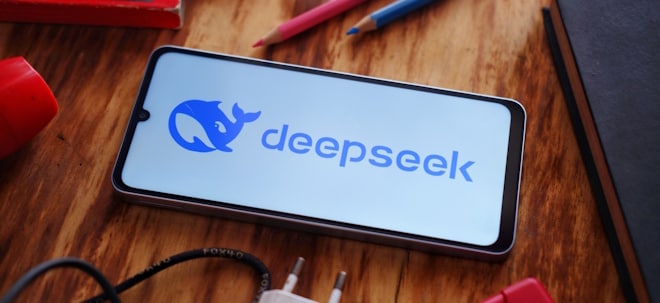Robotaxi Ride-Hailing Rivalry Intensifies: Uber-NVIDIA Pact Vs. Tesla
Werte in diesem Artikel
The autonomous ride-sharing industry is heating up, despite legacy U.S. automakers like Ford and General Motors waving the white flag in their robotaxi ambitions. Ford exited the race in 2022, selling its stake in Argo.AI, and General Motors followed suit in 2024 after investing $10 billion in Cruise, which faced regulatory roadblocks and safety concerns. Currently, Alphabet’s GOOGL Waymo is the clear leader in the U.S. robotaxi space. Waymo has achieved significant milestones in the industry. Its commercial robotaxi services already operate in major cities like San Francisco, Phoenix and Los Angeles. Meanwhile, EV giant Tesla TSLA and Amazon-backed Zoox remain in the spotlight as key contenders. However, a recent partnership between Uber Technologies UBER and NVIDIA NVDA has shaken up the landscape, positioning Uber as a formidable rival to Tesla in the robotaxi market. While UBER’s approach is very different from Tesla's, the companies are eyeing a huge market. Statista projects autonomous ride-hailing to be a $5 trillion market by 2030. As companies race to innovate, 2025 promises to be a pivotal year in the robotaxi revolution.Uber-NVIDIA Collaboration: Revolutionizing Autonomous DrivingUber’s partnership with NVIDIA (announced last week) is set to accelerate the development of autonomous driving solutions. By leveraging NVIDIA’s cutting-edge AI platforms—Cosmos and DGX Cloud—and Uber’s vast repository of ride data, the partnership aims to create scalable and efficient AV models. This alliance could redefine the competitive dynamics in the robotaxi market, challenging Tesla’s dominance.NVIDIA’s Cosmos platform, unveiled at CES 2025, is a breakthrough in synthetic data generation, enabling the simulation of photorealistic, physics-based driving scenarios. This capability is critical for training and evaluating AV systems, reducing reliance on costly real-world testing. Complementing this is the DGX Cloud, a high-performance AI platform that provides the computational power needed to develop complex AV models at scale. Together, these technologies position Uber to fast-track its autonomous driving ambitions.Uber Vs. Tesla Strategies in the Robotaxi MarketWhile Tesla has invested heavily in developing its Full Self-Driving (FSD) technology, Uber’s asset-light approach through strategic partnerships may prove equally impactful.Unlike Tesla, which is building its AV technology in-house, Uber has adopted a partnership-driven strategy. In 2020, Uber sold its self-driving division but retained its focus on becoming the ultimate ride-hailing super app. Collaborations with companies like Waymo and Aurora Innovation highlight Uber’s commitment to integrating cutting-edge AV technologies into its platform. With this approach, Uber has avoided the massive R&D costs associated with developing autonomous systems independently. By integrating NVIDIA’s advanced AI capabilities, Uber is poised to gain a stronger foothold in the robotaxi ride-hailing space.Uber’s dominant market share in the ride-hailing industry also gives it a unique advantage. With its vast network of drivers and customers, Uber can quickly scale autonomous services once the technology matures. Its app is designed to integrate AVs from multiple partners, giving users a variety of options.Tesla, on the other hand, is betting big on its proprietary FSD technology. The company’s camera-based vision system and AI algorithms aim to enable fully autonomous driving. While Tesla’s approach has earned praise for its innovation, it has also faced criticism over safety concerns. With a Trump-led initiative to simplify AV regulations, Tesla could gain a clearer runway to deploy its autonomous fleet. Tesla’s FSD system is currently available in a supervised capacity but the company expects to transition to unsupervised operations in select states like Texas and California this year. The company has already created a "development app," enabling employees to request rides to any location within the San Francisco Bay Area.Tesla’s independence in AV development allows it to maintain full control over its technology. However, this strategy also comes with risks, as any delays or setbacks could impact its market position. Elon Musk’s ambitious promises, including unsupervised FSD capabilities, have drawn both excitement and skepticism. While bullish investors think Tesla will be the leading player in the AV space, critics point to Musk’s history of missed deadlines as a cautionary tale.Tesla and Uber carry a Zacks Rank #3 (Hold) currently each. You can see the complete list of today’s Zacks #1 Rank (Strong Buy) stocks here. A Race Worth WatchingThe robotaxi market is entering a transformative phase, with major players vying for dominance. Uber’s partnership with NVIDIA highlights how collaboration can drive innovation while keeping costs down. For Tesla, this competition increases the need to deliver on its promises. Tesla’s FSD technology has shown potential but its success will depend on overcoming regulatory and safety challenges and meeting the timelines.While Tesla’s independent approach shows its commitment to technological leadership, Uber’s strategy of leveraging external expertise could prove equally effective. The stakes are high, with the robotaxi ride-hailing market offering massive growth opportunities for both automakers and tech companies. Whether through partnerships or in-house development, the race to deploy robotaxis at scale is set to reshape transportation.7 Best Stocks for the Next 30 DaysJust released: Experts distill 7 elite stocks from the current list of 220 Zacks Rank #1 Strong Buys. They deem these tickers "Most Likely for Early Price Pops."Since 1988, the full list has beaten the market more than 2X over with an average gain of +24.1% per year. So be sure to give these hand picked 7 your immediate attention. See them now >>Want the latest recommendations from Zacks Investment Research? Today, you can download 7 Best Stocks for the Next 30 Days. Click to get this free report NVIDIA Corporation (NVDA): Free Stock Analysis Report Tesla, Inc. (TSLA): Free Stock Analysis Report Alphabet Inc. (GOOGL): Free Stock Analysis Report Uber Technologies, Inc. (UBER): Free Stock Analysis ReportTo read this article on Zacks.com click here.Zacks Investment ResearchWeiter zum vollständigen Artikel bei Zacks
Ausgewählte Hebelprodukte auf NVIDIA
Mit Knock-outs können spekulative Anleger überproportional an Kursbewegungen partizipieren. Wählen Sie einfach den gewünschten Hebel und wir zeigen Ihnen passende Open-End Produkte auf NVIDIA
Der Hebel muss zwischen 2 und 20 liegen
| Name | Hebel | KO | Emittent |
|---|
| Name | Hebel | KO | Emittent |
|---|
Quelle: Zacks
Nachrichten zu NVIDIA Corp.
Analysen zu NVIDIA Corp.
| Datum | Rating | Analyst | |
|---|---|---|---|
| 27.01.2025 | NVIDIA Outperform | Bernstein Research | |
| 21.01.2025 | NVIDIA Buy | UBS AG | |
| 14.01.2025 | NVIDIA Outperform | Bernstein Research | |
| 10.01.2025 | NVIDIA Buy | UBS AG | |
| 10.01.2025 | NVIDIA Hold | Deutsche Bank AG |
| Datum | Rating | Analyst | |
|---|---|---|---|
| 27.01.2025 | NVIDIA Outperform | Bernstein Research | |
| 21.01.2025 | NVIDIA Buy | UBS AG | |
| 14.01.2025 | NVIDIA Outperform | Bernstein Research | |
| 10.01.2025 | NVIDIA Buy | UBS AG | |
| 09.01.2025 | NVIDIA Buy | UBS AG |
| Datum | Rating | Analyst | |
|---|---|---|---|
| 10.01.2025 | NVIDIA Hold | Deutsche Bank AG | |
| 21.11.2024 | NVIDIA Halten | DZ BANK | |
| 21.11.2024 | NVIDIA Hold | Deutsche Bank AG | |
| 29.08.2024 | NVIDIA Hold | Deutsche Bank AG | |
| 11.06.2024 | NVIDIA Halten | DZ BANK |
| Datum | Rating | Analyst | |
|---|---|---|---|
| 04.04.2017 | NVIDIA Underweight | Pacific Crest Securities Inc. | |
| 24.02.2017 | NVIDIA Underperform | BMO Capital Markets | |
| 23.02.2017 | NVIDIA Reduce | Instinet | |
| 14.01.2016 | NVIDIA Underweight | Barclays Capital | |
| 26.07.2011 | NVIDIA underperform | Needham & Company, LLC |
Um die Übersicht zu verbessern, haben Sie die Möglichkeit, die Analysen für NVIDIA Corp. nach folgenden Kriterien zu filtern.
Alle: Alle Empfehlungen


